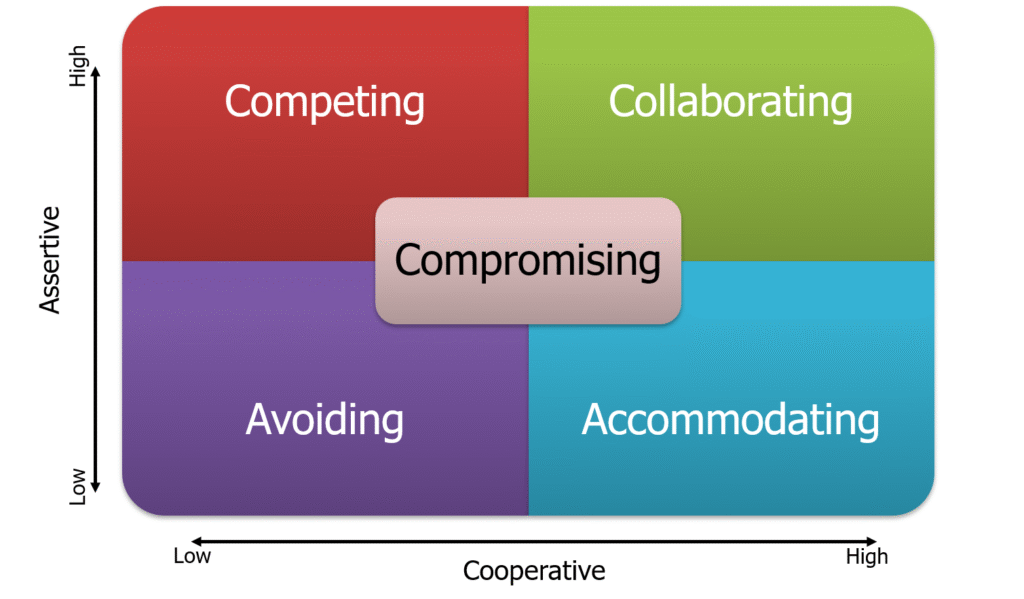Your product team has all the talent needed to build something extraordinary. Yet feature discussions turn into standoffs between engineering and business. Design ideas get shot down before they’re fully explored. Cross-functional planning sessions feel more like negotiations than collaborations.
These workplace conflicts aren’t just personality problems or communication breakdowns. They can be managed strategically with the right framework. The Thomas-Kilmann Conflict Mode Instrument provides a practical approach for understanding and improving how your team handles disagreements.
The Thomas-Kilmann Framework
The Thomas-Kilmann Conflict Mode Instrument identifies five approaches people use when their concerns clash with others:
Competing means pursuing your position regardless of others’ concerns. Product managers who push through feature decisions despite engineering objections use this approach. Effective during crises or when you have critical expertise, but destructive when overused.
Accommodating means giving up your position to satisfy others. Product managers who agree to unrealistic timelines to avoid stakeholder conflict fall into this pattern. Builds short-term relationships but undermines long-term strategy.
Avoiding means sidestepping conflict entirely. Design leaders who stop attending meetings where their ideas face pushback often choose avoidance. Useful when emotions run high, harmful when important decisions get delayed.
Collaborating means investing time to satisfy everyone’s core concerns. Product discovery sessions work well this way. Most effective for complex problems, but too slow when quick decisions are needed.
Compromising means finding middle-ground solutions where everyone gives up something. Sprint planning often involves compromising between feature scope and delivery timelines.

Leading Your Product Team Through Conflict
Most people default to one or two conflict styles regardless of the situation. Product managers often accommodate too much, fearing that asserting their position will damage relationships. Engineering leaders compete by default on technical decisions, sometimes alienating stakeholders. Design leaders avoid conflict around feasibility constraints, creating unrealistic proposals.
Effective leaders develop the ability to recognize when their team is stuck in unproductive conflict patterns and know which approach the situation requires. They step in to compete when facing tight deadlines, create space for accommodation when building stakeholder relationships, allow avoidance when emotions run high, facilitate collaboration for complex problems, and guide compromises when efficiency matters most.
Start by observing your team’s patterns. Which members consistently withdraw from challenging discussions? Who always pushes their position regardless of context? What topics repeatedly create the same dynamics?
Practice recognizing what each situation actually requires. Does this conflict need a quick decision, or would exploring all perspectives lead to a better outcome? Begin intervening strategically rather than letting conflicts play out automatically.
The goal isn’t to eliminate conflict but to handle it more skillfully, building the foundation for high-performing teams that turn inevitable tensions into better solutions.
Want to learn more about using Thomas-Kilmann and other frameworks to build high-performing teams?
The Building High-Performing Teams Workshop teaches product leaders how to apply strategic conflict management alongside psychological safety, decision authority, goal alignment, and other proven frameworks for team excellence. You’ll leave with practical tools and a customized roadmap for your team’s specific challenges.
Learn more about the Building High-Performing Teams Workshop →
Additional Resources:
